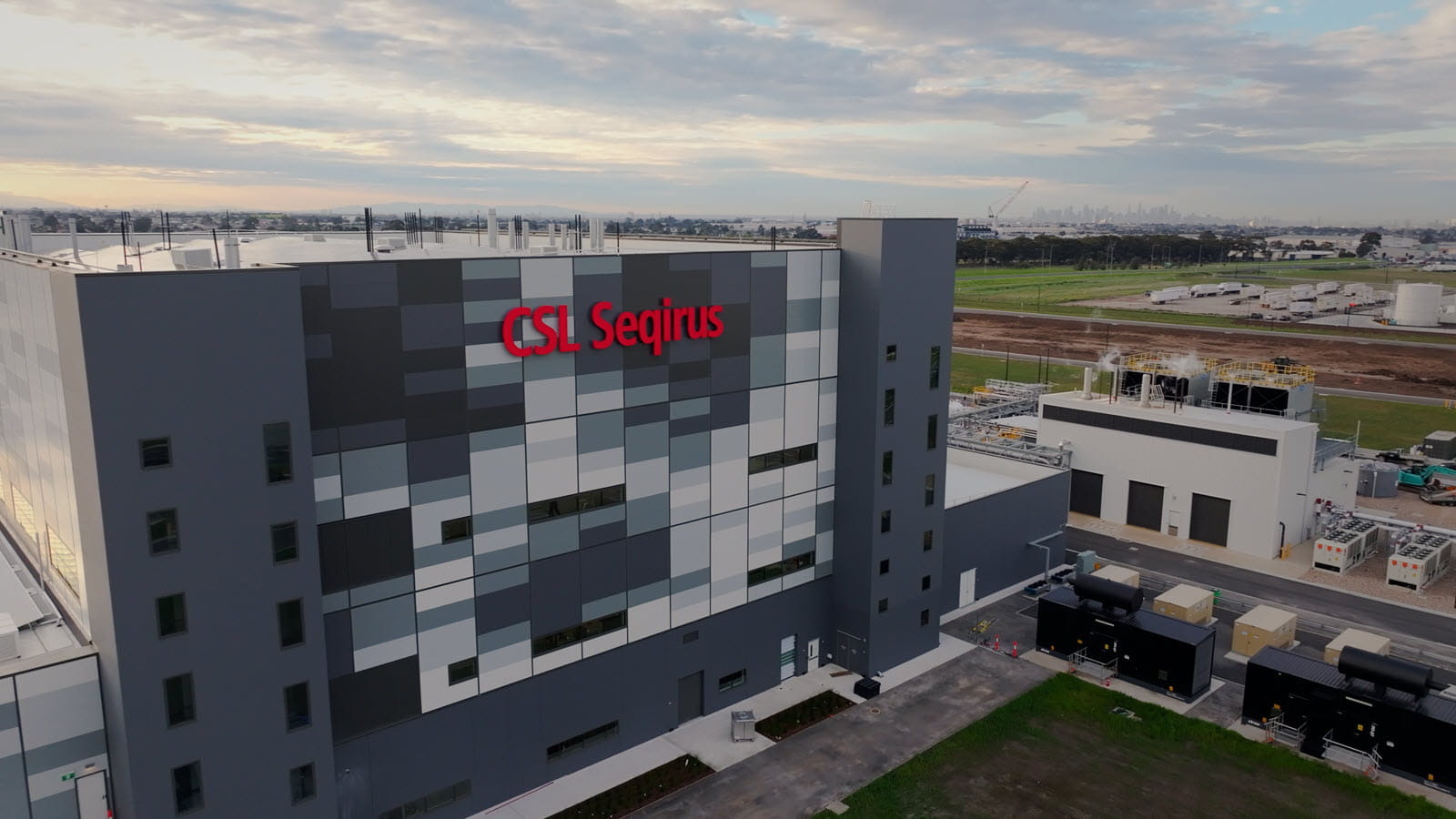With the opening of its new high-tech vaccine manufacturing facility at Tullamarine, CSL Seqirus is turning the page.
The site near Melbourne Airport includes three buildings and will have a gross floor area of 28,400m2, larger than the playing surface of the famous Melbourne Cricket Ground. The facility has been electrified and incorporates on-site solar energy generation, heat and water recovery to preserve a healthier environment.
“This facility will build a platform for our next wave of innovation in vaccines and unique health challenges, setting a new standard of care,” said CSL Seqirus Managing Director Dave Ross, who will be on hand for the 2 December opening celebration.
Globally, the World Health Organization estimates that seasonal flu infects 1 billion people annually, causing severe illness in 3-5 million and 290,000-650,000 respiratory deaths.
Here are five facts about the new site, built to protect public health:
- It is the only manufacturing facility of its kind in the Southern Hemisphere.
- Considered modern, efficient and highly scalable, cell-based influenza vaccine manufacturing advances scalability, reduces reliance on large volumes of critical materials and enables rapid production of vaccines using state-of-the-art technology. That makes it well suited to pandemic preparedness. With year-round seasonal flu vaccine manufacturing, the Tullamarine facility will be ever ready to switch over to pandemic response.
- It features a digitally connected manufacturing environment, deploying advanced analytics that will drive innovation and optimise manufacturing operations. This includes a fully automated and paperless manufacturing execution system that will support our highly skilled workforce to optimise production, conduct predictive maintenance, improve quality control and reduce downtime.
- Tullamarine will support a supply chain worth $300 million with hundreds of experts on hand to ensure that essential vaccines and antivenoms reach the clinics and patients who need them.
- It will be the only manufacturing site in the world capable of producing Australia’s 11 antivenoms for venomous creatures and the human Q-Fever vaccine.
